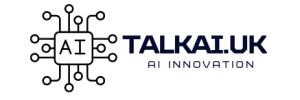In a world where wildlife populations are facing unprecedented challenges, the intersection of technology and conservation has never been more critical. Drones and Artificial Intelligence (AI) are playing an increasingly essential role in the protection of endangered species. This article will explore how these remarkable technologies are revolutionizing wildlife conservation.
Uniting Technology and Conservation
The convergence of AI and drone technology offers fresh hope for endangered species worldwide. Conservationists are leveraging these technologies to monitor habitats, track animal movements, and combat poaching activities more effectively than ever before. The application of AI in wildlife conservation is not only innovative but also essential in an era of rapid biodiversity loss [1].
Drones: The New Eye in the Sky
Drones, also known as Unmanned Aerial Vehicles (UAVs), provide an unparalleled vantage point for wildlife researchers. With the ability to cover vast distances, they can access remote and challenging terrains while minimizing human disturbance to the natural habitat [2]. High-resolution cameras and other advanced sensors attached to drones capture detailed data, providing valuable insights into wildlife populations and their environments.
AI and Machine Learning: Enhancing Wildlife Research
Beyond the drone technology itself, AI and Machine Learning (ML) play an integral part in processing and interpreting the data collected. Modern AI algorithms can identify and count individual animals, even differentiating between species, thus saving researchers countless hours of manual data analysis.
Researchers at Duke University developed a machine learning algorithm that identifies and classifies marine animals in drone footage with an impressive 96% accuracy rate. The system, named “Duke Marine Lab Unmanned Systems Facility,” has significantly improved the speed and efficiency of marine conservation efforts [3].
Anti-Poaching Efforts: Drones and AI Lead the Charge
Perhaps one of the most compelling applications of drones and AI in wildlife conservation is in anti-poaching efforts. Poaching is a grave threat to many endangered species, and traditional monitoring methods are often inadequate in the face of such a widespread issue.
In response to this challenge, Air Shepherd, a program run by the Lindbergh Foundation, uses a combination of drone surveillance and predictive AI algorithms. These technologies help anticipate poaching incidents by analyzing factors like historical data, terrain, and human activity patterns. The initiative has reportedly decreased poaching activities by up to 80% in test areas, demonstrating the potential of these technologies in protecting endangered species [4].
The Future of Wildlife Conservation
As AI technology continues to advance, so too will its applications in wildlife conservation. Already, efforts are being made to create AI algorithms capable of detecting signs of animal stress or illness. This could enable earlier intervention, potentially saving individual animals and preventing diseases from spreading to other members of the species.
In the future, drones equipped with AI could be programmed to identify environmental changes, such as alterations in vegetation cover, which could indicate shifts in habitat suitability. This information could be invaluable in predicting and mitigating threats to wildlife populations.
Conclusion: An Eco-Tech Revolution
We are currently witnessing a revolutionary intersection of technology and environmentalism. Drones and AI are proving to be powerful tools in the fight to protect our planet’s endangered species. By monitoring wildlife populations and their habitats, predicting and preventing poaching, and identifying threats to wildlife health, these technologies are ushering in a new era of wildlife conservation.
Although we face significant environmental challenges, innovative solutions such as AI and drone technology give us reason to remain hopeful. Through continued advancements and collaborations across disciplines, we can harness the power of these technologies to ensure a sustainable future for our planet’s diverse wildlife.
While they are by no means a panacea, drones and AI constitute a significant part of the puzzle in global conservation efforts. As we look forward to a more technologically integrated future, we can expect to see these tools playing an increasingly prominent role in the safeguarding of our world’s precious wildlife.
Sources:



